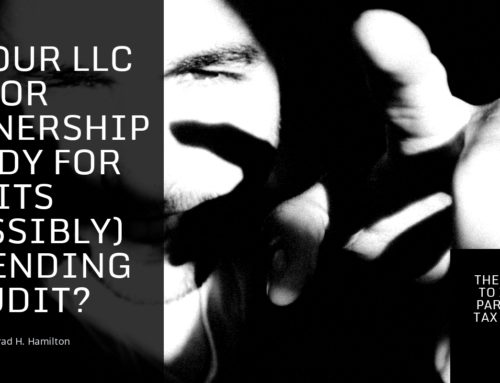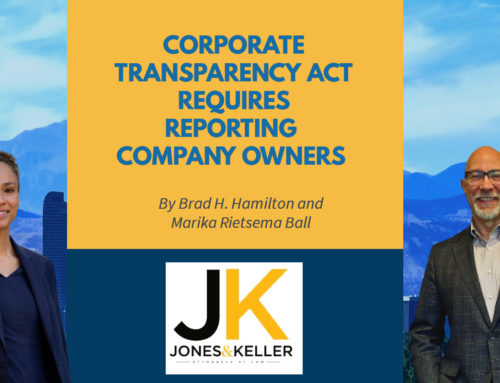According to the SEC, in 2012 companies raised $173 billion through direct private placements, and pooled funds raised $725 billion. These offerings were conducted without public advertising. After September 23, 2013 companies and hedge funds offering their securities in private placements can now advertise the offering to the public, so long as (1) all purchasers are “accredited investors” and (2) they take “reasonable steps” to verify that each purchaser is “accredited.” However, the new rules also increase the risk and likelihood of losing your private placement exemption, and should be used with caution.
Background
The basic foundation of securities laws in the United States is that every offering and sale of a security must be either registered with the SEC and applicable state commissions, or qualify for an exemption from registration. The primary exemption from registration is §4(2) of the Securities Act of 1933 (“Securities Act”), which exempts “transactions by an issuer not involving any public offering.” In the decades after 1933, court rulings and SEC guidance added a confusing and formidable crazy-quilt of rules about what made a “private placement” under §4(2). To address this problem, in 1983 the SEC issued Regulation D; private placements that meet one of the three Reg D requirements are deemed exempt from registration, and thus Reg D provides issuers with a “safe harbor” so they know their private placement is exempt, instead of having to deal with the uncertainty of §4(2).
The details of Reg D offerings are beyond the scope of this article, but nearly all private placements by issuers are conducted under Rule 506 of Reg D, because there is no limit on the amount raised or the number of accredited investors (now known as Rule 506(b)). There are several specific requirements that must be met to comply with a Reg D exemption, and Form D must be filed with the SEC and the relevant state commissions – more on that later. But until now, it was a requirement of every Reg D private placement that it not involve any public offering.
That means no advertising, no Internet webpages about your offering, no hosted breakfast meetings at the retirement home about an “investment opportunity,” no facebook postings, no windshield flyers at the mall – until now.
The JOBS Act
Section 201(a) of The Jumpstart Our Business Startups Act, (the “JOBS Act”)(April 5, 2012) directed the SEC to issue rules allowing “general solicitation” in connection with a private placement. Earlier this year the SEC issued new Rule 506(c), which went into effect on September 23, 2013 and provides a new “safe harbor” exemption from registration for securities offerings marketed using general advertising if:
- all investors are “accredited investors” at the time of investment, and
- the issuer takes reasonable steps to verify that each purchaser is an accredited investor.
How It Works
New Rule 506(c) under Regulation D allows issuers and their agents to advertise and offer to the public their securities, without having to register the offering or the securities under the Securities Act, if (1) all investors are “accredited investors” at the time of investment, (2) the issuer takes reasonable steps to verify that each purchaser is an accredited investor, and (3) they otherwise comply with Reg D. Note that the definition of “accredited investor” under Reg D has not changed, which means that an “accredited investor” includes persons that the issuer reasonably believes to be an accredited investor. Therefore, the issuer will not lose the exemption if an unaccredited investor sneaks in, so long as the issuer reasonably believed the investor was accredited.
Securities issued under new Rule 506(c) will still be “covered securities” under federal securities laws, and therefore preempt the “Blue Sky” laws of the 50-states; state registration will not be necessary, but the issuer must still file Form D with the SEC and the states where securities are sold. Form D has been amended, and the issuer must now check-the-box to state whether the offering is conducted under new Rule 506(c), or traditional Rule 506(b) with no public offering.
One of the key compliance requirements will be taking “reasonable steps to verify each purchaser is an accredited investor.” The SEC has provided guidance. First, the traditional method of requiring investors to “self-certify” that they are accredited by checking a box on their stock purchase agreement will not be acceptable for public offerings under new Rule 506(c). Second, rather than a “bright line” test, the SEC has adopted a “principals-based approach” to whether the issuer takes reasonable steps – a “common sense” test, depending on the facts of each offering. At one end of the spectrum, if the issuer sells its shares to JP Morgan Chase, Bank of America and Goldman Sachs, very little effort will be required to establish that the purchasers are “accredited,” it is readily confirmed in the public record. On the other end of the spectrum, verifying the accredited status of natural persons will require some effort (and record-keeping).
Natural persons may be accredited based on (1) income (alone or with spouse), or (2) their net worth. The SEC provided a few safe-harbor methods for satisfying that investors are “accredited,” which are not exclusive.
Income
An issuer will be deemed to have satisfied the verification requirement for the income of a natural person by reviewing the investor’s IRS income forms for the two most recent years, such as Form W-2, Schedule K-1, Form 1099, and Form 1040. The issuer must also get a written representation from the investor that he expects to reach the required income level again in the current year. If the income requirement is based on joint income with the investor’s spouse, the IRS forms and representation must pertain to both the investor and spouse.
Net Worth
An issuer will be deemed to have satisfied the verification requirement for the net worth of a natural person by reviewing one or more of the investor’s bank statements, brokerage statements, securities account statements, certificates of deposit, tax assessments and appraisal reports for assets, and a consumer credit report for liabilities from one of Experian, Equifax, or Trans Union. The investor’s written representations described above are required.
Third-Party Verification
An issuer will be deemed to have satisfied the verification requirement by getting a written confirmation from the investor’s registered securities broker or investment adviser, CPA or licensed attorney.
Bad-Actor Disqualifications
Concurrent with issuing the new Rule 506(c), the SEC also issued the long awaited “Bad Actor” disqualification rules, disqualifying felons and other “bad actors” from participating in Rule 506 offerings. The issuer will lose its private placement exemption and be subject to rescission (discussed below) if the issuer, a director or officer, a 20% owner, a promoter, or a finder has had a “disqualifying event” such as a criminal conviction, a securities related injunction or restraining order, a banking regulator order, or any of a number of other disqualifying events. These will be discussed in more detail in a companion article.
The Big Risk – Claims for Rescission, Damages and Enforcement Action
The penalty for violating the registration or antifraud provisions of the securities laws is that, at a minimum, investors can rescind their purchase and receive a refund of their investment. Some states, such as Colorado, provide for attorney’s fees in these types of cases. Additionally, the state and federal regulatory agencies have enforcement rights and, in extreme and aggravated circumstances, may fine and enforce criminal penalties.
The federal antifraud provisions arise primarily from Section 10(b) and rule 10b-5 of the Securities Exchange Act of 1934 (“Exchange Act”), as well as the lesser known Section 12(2) of the Securities Act. States have similar or identical antifraud provisions in their “Blue Sky” laws. Failure to comply with these provisions can result in civil liabilities (i.e., money damages). The liability can be, and often is, personal as to corporate officers, directors, principal shareholders and promoters. These antifraud laws prohibit any person in connection with the purchase or sale of any security from misrepresenting or omitting a material fact or engaging in any act or practice that constitutes a “fraud” or deceit upon any other person. Fraud, for securities law purposes, is much broader than the average person thinks of “fraud”. It includes omissions in disclosure (sometimes even unintentional ones) rather than just deliberate misrepresentations. Therefore, regardless of whether you intend to defraud an investor, if you fail to disclose a material fact, you may be liable.
If an issuer loses its exemption, or, fails to disclose important facts or makes mistakes in disclosures, it is at risk for claims by investors seeking to get their money back, and the directors and officers who participated in the offering may be personally liable. None of the antifraud damages or rescission rights were removed by these new rules.
Risk #1 – Lose The Exemption, No Fall-Back Exemption
Lawyers commonly help their clients design and conduct private placements so that they comply with both old Rule 506 of Reg D (now Rule 506(b)), and §4(2) of the Securities Act. Rule 506 has a number of specific requirements that, if not met, will cause you to lose the exemption. For example, it is not uncommon for an issuer to restrict its offering to accredited investors, thereby decreasing its disclosure obligations, but then decided to let in Uncle John and Aunt Jane, who are not accredited. Since it hasn’t met the disclosure obligations for non-accredited investors required by Rule 506, the issuer has lost the benefit of that exemption. However, if the placement also complied with the §4(2) requirements, and Uncle John and Aunt Jane meet the “sophisticated investor” requirements of §4(2), the issuer has not lost its private placement exemption – the offering is still exempt.
But, if the offering includes general solicitation and advertising to the public under new Rule 506(c), there is no fallback exemption. Remember, the §4(2) registration exemption applies only to offerings “not involving any public offering,” and therefore will not be available as a fallback if you fail to meet the formal requirements of new Rule 506(c). A private placement with public advertising under new Rule 506(c) is all-or-nothing – you are on the trapeze without a net.
Risk #2 – Commit Securities “Fraud”
“Oops, we forgot to mention, that one guy is suing us about that one thing!”
“Did we tell the investors about that note coming due next year?”
Generally speaking, liability for securities fraud arises when the investor makes his investment decision. While there is no specific disclosure requirement under Rule 506 for offerings made only to accredited investors, without a disclosure document like a private placement memorandum or offering circular, the issuer will be in a tough spot if an investor claims securities fraud, which will be all the more difficult if the offering was advertised. First, a disgruntled investor could claim that he decided to invest based on the public advertising that he saw, before he even saw any investment documents – a risk that did not exist before. An issuer would have little evidence to defend that claim without a robust offering disclosure document with comprehensive risk factor disclosures, and a well-controlled investment acceptance procedure.
Second, securities “fraud” includes the failure to disclose a material fact, which is a fact that a reasonable investor would consider important to an investment decision. The courts have consistently held that generic or “blanket” risk disclosures, such as “this investment is risky and you could lose all your money,” are not sufficient to protect issuers from liability for securities fraud. Fact and risk disclosures must be well considered and specific to each issuer and each offering. In the author’s opinion, public advertising of private offerings will increase the already considerable tension between an issuer’s desire to make its stock attractive, and the lawyer’s desire to disclose all “bad facts” and potential risks. Absent the regulatory scheme of SEC review and comment for public offerings, and specific and very detailed disclosure rules, issuers making public offerings of private placements under new Rule 506(c) may “sales pitch” their stock, and pay the price for inaccurate and incomplete advertisements and solicitations at a later date.
Risk #3 – Lose the Broker-Dealer Exemption
In addition to the registration exemption, a private placement must also comply with the broker-dealer registration or exemption requirements of the Exchange Act. That is, securities may not be sold in the United States except by a person registered as a broker-dealer (or their agents), unless an exemption applies – the persons selling the securities must be registered or exempt. The “issuer exemption” is most commonly used for a private placement. The issuer exemption allows the directors and officers of a company to sell its securities without registering (1) so long as they do not sell more often than once every 12 months, (2) the selling persons are officers, directors, or full-time employees who perform substantial duties for the Company other than selling these securities, and (3) the selling persons are not paid compensation for their sales efforts – they can continue to receive their normal compensation, but no commissions or bonuses for selling the stock. Issuers must be mindful that these rules still apply, even with a publicly advertised private placement. If advertising an offering generates excessive calls and inquiries to the company, the company must be very careful that the persons taking the calls understand their roles and limitations in the context of the broker-dealer exemption, and don’t cause the issuer to lose its “issuer exemption.”
Risk #4 – Hedge Funds May Get Special Attention
In addition to the registration exemption and the broker-dealer exemption, private pooled investment funds, such as hedge funds, private equity funds and venture capital must, must be registered as an investment company under the Investment Company Act of 1940, unless an exemption applies. Most private funds rely on one of two exemptions from the 1940 Act, both of which are not available if they make a public offering of their securities. Because the new rules allowing general solicitation would be of no value to private funds if advertising caused them to lose their 1940 Act registration exemption, the SEC has determined that private funds can make public offerings under Rule 506(c) without losing their 1940 Act registration exemption. Specifically, the SEC ruled that since the JOBS Act provided that offers and sales under new Rule 506(c) shall not be deemed public offerings “under the Federal securities laws,” and the 1940 Act is a “Federal securities law,” then, offerings by private funds under Rule 506(c) shall not be deemed public offerings.
However, the SEC indicated it may be paying particular attention to advertising and disclosures by private funds. Investment advisers to private funds are subject to additional rules under the Advisers Act, and in its issuing release the SEC said “we intend to employ all of the broad authority Congress provided us ….. and direct it at adviser conduct” affecting investors in private funds. The SEC provided this pointed reminder: “Recently, for example, we have brought enforcement actions against private funds advisers and others for material misrepresentations to investors and prospective investors regarding fund performance, strategy, and investment, among other things.” It is probable that the SEC will be carefully scrutinizing advertising and sales materials of private funds for potential misrepresentations.
The Early Fallout
The SEC, and particularly state securities regulators, did not support allowing “public advertising of private placements” (and yes, that is a direct contradiction in terms – a fact not lost on the SEC). However, the JOBS Act required this rule-making, and it does not come without a cost. First, the SEC finally issued the “Bad Actor” rules, prohibiting persons with a relevant bad history from participating. That will be discussed in a different article. At the same time, the SEC issued new proposed rules regarding Form D and filing requirements. Until now, Form D has been a mere formality and an information gathering tool for the SEC. Failure to timely file Form D had little or no real consequences. The SEC is proposing to add real enforcement and penalties behind the Form D filing requirement, and to require issuers making public offerings under new Rule 506(c) to file their offering materials with the SEC. While these new Form D and reporting requirements are only proposed for comment at this time, and the final regulations remain to be seen, it is clear that the SEC intends to keep a close eye on issuers using advertising for their private placements. State securities commissions will be doing the same.




